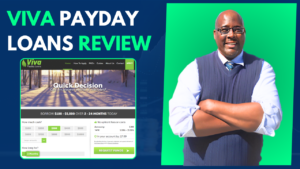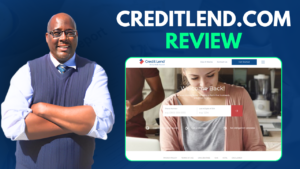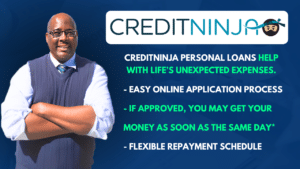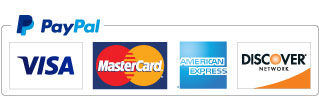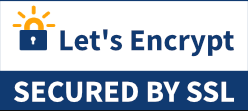When people talk about “guaranteed approval” for personal loans, it creates a lot of confusion. Many borrowers—especially those with bad credit or low income—apply for these loans and still get denied. So what’s the real story behind personal loan approval? Why do some people get through and others don’t?
Here’s a breakdown of what’s really happening behind the scenes with lenders. And why your income, your credit file, and even the address you list on your application can make or break your chances of getting approved.
Income Is the First Gatekeeper
The most important thing that people overlook is income. Not credit score. Not how many loans you've repaid. It’s income.
Personal loan lenders usually group applicants into income tiers. And each tier gives you access to a different set of lenders. So if you're applying for a loan outside your income bracket, you're likely wasting time and hurting your credit profile with unnecessary inquiries.
Here’s how the tiers typically break down:
1. Income: $30,000 or Less
At this income level, your best chance is with tribal lenders. These are financial entities typically operating under sovereign tribal laws. They don't use the major credit bureaus and often don’t do a hard credit pull.
Some of the common tribal lenders include:
- Viva Payday Loans
- Big Buck Loans
- Green Dollar Loans
- Explore Credit
These lenders are used to working with borrowers who have poor credit and minimal income. Their approval process is designed for high-risk profiles. They often look at your job status, your ability to receive funds (bank account in good standing), and whether your identity checks out—not your FICO score.
Keep in mind, these types of loans often have high interest rates. But for someone making under $30K with bad credit, they’re often the only option.
2. Income: $30,001 – $45,000
This is the middle tier. You now have access to more mainstream bad-credit-friendly platforms, mostly loan matching services.
These include:
- Zippy Loans
- Viva Loans (not to be confused with Viva Payday)
- CashUSA
- PersonalLoans.com
These platforms don’t lend money directly. Instead, they connect your profile to a network of lenders that may approve you based on your income and credit situation. And even here, most of them assume you have a credit score under 600.
Loan offers at this income level usually range from $1,000 to $15,000.
Note: Even if your score is low, you might still qualify because the lenders are less concerned with score and more focused on:
- Whether you have a stable income
- Whether your data matches third-party databases
- Whether you’ve defaulted recently
3. Income: $45,000 and Up
If your income is over $45,000, you now have access to more structured, large-scale lenders that operate within federal lending frameworks.
These include:
- Universal Credit
- Avant
- Upstart
- Upgrade
- Achieve
These lenders offer loans from $1,000 up to $50,000, and many of them do accept credit scores in the 560–620 range. But you still need to hit their income minimums, and they often look at more than just your FICO score.
Things they care about:
- Debt-to-income ratio (DTI): If it’s above 70%, some will still work with you (Achieve, for example).
- Credit file age: If your credit history is less than two years old, even a score of 800 might not be enough.
- Number of trade lines: You need to show history, not just high numbers. Thin files—even if they look clean—get denied.
Credit Score Isn’t the Whole Picture
If you’ve got a score of 560–620, you’re not locked out of all loan options. But you need to match with the right kind of lender for your profile.
Many lenders who claim to work with “bad credit” expect that your score will be low. That’s baked into their model. But what they won’t ignore is if your file looks risky in other ways.
Key factors lenders look at:
- File age (under 2 years is seen as risky)
- Recent inquiries (multiple applications in a short time is a red flag)
- Credit mix (just 2 credit cards won’t cut it)
- Defaults (recent unpaid accounts are a major problem)
Even if your credit score is passable, if your file looks thin or inconsistent, that’s enough to get you denied.
Matching Address & Third-Party Databases
Here’s a reason for denial most people never even think about: the address on your application doesn’t match what’s on file with third-party credit data companies.
These are not the big three (Experian, Equifax, TransUnion). These are lesser-known but critically important bureaus like:
- Clarity (owned by Experian)
- DataX (owned by Equifax)
- FactorTrust (owned by TransUnion)
- LexisNexis
Most lenders working with subprime borrowers don’t bother with a hard credit pull. They use these third-party databases instead. If your address, name spelling, or other basic info doesn’t match across all systems, they will flag you as a fraud risk. And you’ll get denied without even knowing why.
So before applying, make sure your mailing address is up to date on your credit reports and on any major account tied to your name (bank accounts, utility bills, government records).
High DTI Can Still Get Approved – With the Right Lender
A debt-to-income ratio (DTI) over 70% will get you automatically denied by a lot of mainstream lenders. But not all of them.
Some lenders, like Achieve, will still work with you if:
- Your credit score is 620 or higher
- You’re making over $45,000 annually
- You haven’t had recent defaults
This is another reason why applying through a system that filters for income and credit together can help avoid wasted applications.
Too Many Open Loans = Automatic No
This is another approval killer that’s rarely mentioned. If you already have multiple active loans—especially short-term or payday-type loans—most lenders won’t touch you.
They don’t care that you’re current on payments. What they see is a high-risk borrower who’s over-leveraged. So even if your income is decent, this alone could block your approval.
Applying to the Wrong Lenders Hurts You
When you apply to a lender that doesn’t match your income and credit profile, you’re not just wasting time. You’re increasing the number of inquiries on your file, which lowers your score and makes you look desperate to future lenders.
That’s why using a pre-qualification tool or a site that filters offers based on both income and credit score is a better strategy.
Some platforms, like Houston’s, are designed to guide you to only the lenders that match your profile. That way, you’re not submitting random applications and hoping something sticks.
Summary: What to Do Next
If you’re struggling to get approved for a personal loan, step back and assess the three key areas:
- What is your actual income?
- Under $30K? Stick with tribal lenders.
- $30–45K? Use loan platforms like Zippy or Viva Loans.
- Over $45K? Consider larger lenders like Universal Credit, Avant, or Upstart.
- Is your credit file old enough and active enough?
- You need more than just a score. You need 2+ years of history and multiple trade lines.
- Is your data consistent across all systems?
- Make sure your address and name match across your credit reports and third-party data sources.
If your situation doesn’t meet these criteria yet, then applying to 10 different places won't change anything—it’ll just damage your profile further. Instead, focus on cleaning up your credit file, increasing your income if possible, and applying smarter.

